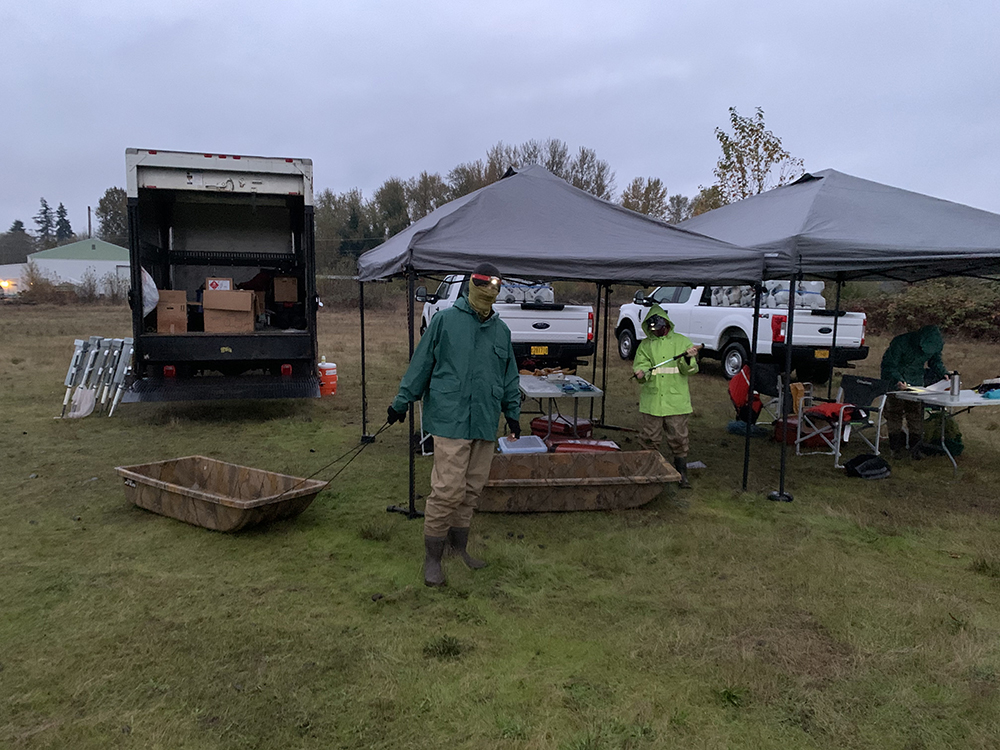For more information: https://fses.oregonstate.edu/onion
Research Highlight:
Research Continued through the Covid-19 pandemic
Adhering to the university and state guidelines, we continued to conduct research in 2020. We deployed samplers on the Columbia river as well as through the mail in our wildfire air quality sampling study.



Silicone Wristband Personal Monitoring Device
Accurately assessing a person’s exposures to putative environmental toxicants is central to the challenge of determining environmental health effects. The lack of low cost, easy-to-use personal sampling technology hinders our ability to understand the effect of the environment on health.
We are developing common wristbands to serve as passive samplers that quantify chemical exposure from our environment. We have shown these simple wristbands, when appropriately prepared provide a simple solution for studies into chemical exposures. With our powerful and sensitive analytical techniques refined over two decades, over 1500 common environmental contaminants can be analyzed for low cost.
If you would like to know more, please see the full publication and follow the additional research we are pursuing with the wristbands (see more here). You can also contact us for more information or to suggest a collaboration.
Our state-of-the-art facility contains two identical Agilent 7890A - 5975C GC-MS systems, an Agilent GC-ECD 6890, a Markes Unity thermal desorption chamber coupled with an Agilent 6890A - 7000 GC-MS and two triple-quadrupole Agilent 7890A - 7000 GC-MS-MS systems. This array of instruments allows us to couple high-throughput analytical chemistry with extraordinary sensitivity, accuracy and precision.
A new addition to the group capabilities, a new Gas Isotope Ratio MS unit targeted towards forensic source identification.
Contact Us:
FSES Director Dr. Kim Anderson: kim.anderson@oregonstate.edu 541-737-8501
FSES Program Coordinator Anna Naughton: anna.naughton@oregonstate.edu 541-737-1766